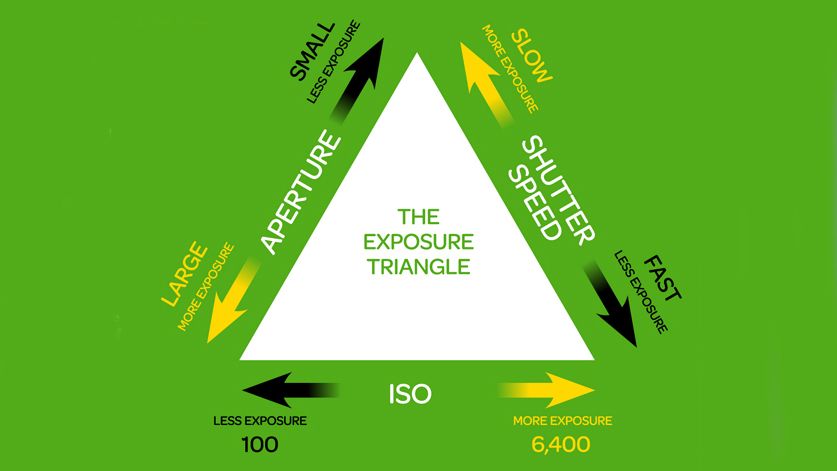


Typically when we are speaking about shutters, we are referring to mechanical shutters in a DSLR camera. The shutter can open and close in less than 1/3000 seconds but can also be programmed to remain open for 30 seconds or more. The camera’s shutter remains closed until you press the shutter release button (to take a picture) at which time the shutter opens and closes to allow the camera’s image sensor to capture a photo. Aperture is one component in controlling depth of field. A large aperture admits more light and a small aperture admits less light to the shutter and image sensor. It’s made up of small blades which rotate synchronously. The part of the lens that controls the aperture size is the diaphragm, similar to the pupils of your eyes. A large f-stop leads to a small aperture a small f-stop leads to a large aperture. The size of the aperture or lens opening can change and is measured by “f-numbers.” Lenses have a particular set of f-number sizes called f-stops. But what does all that exactly mean? Let me elaborate a bit more without going into the science. Now you have an idea of the basics of photography.
SHUTTER SPEED F STOP CHART ISO
ISO stands for International Standard Organization. A lower ISO means your camera is less sensitive to light. ISO Definition: The camera image sensor’s sensitivity to light. Shutter Speed Definition: The amount of time the shutter (a flap or curtain covering the image sensor) is open to control the amount of light passing through the lens to the image sensor and creating a photo. What Are Aperture, Shutter Speed, and ISO?Īperture Definition: The adjustable opening in a camera lens that light passes through and reaches the camera’s shutter and image sensor. They are the foundations of digital photography. Understanding aperture, shutter speed, and ISO are crucial for beginner photographers. We are also a participant in the Amazon Services LLC Associates Program. Disclosure: We earn a commission on purchases made through our affiliate links at no extra charge to you.


 0 kommentar(er)
0 kommentar(er)
